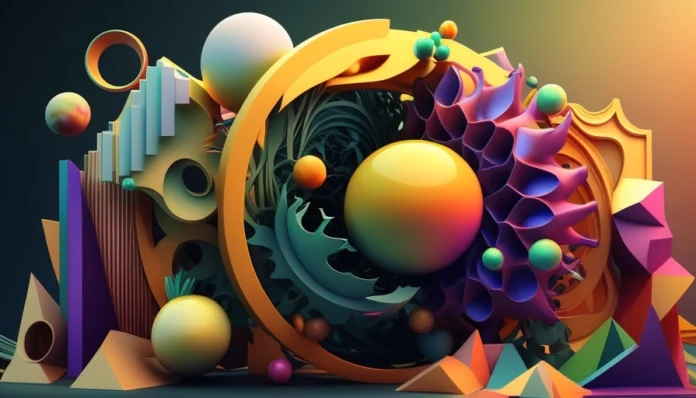[ad_1]
The world of cryptocurrencies and blockchain technology has given rise to a new form of digital asset called NFT. These tokens represent ownership of a specific asset and are stored on a blockchain, making them immutable and impossible to duplicate. NFTs have grown in popularity in recent years, with the creation of various types of NFTs, each with their own unique features and benefits.
In this simple guide, we will look at the different types of NFTs with some examples to help you better understand this concept.
What are NFTs?
NFTs, or non-fungible tokens, are unique digital assets that are stored on a blockchain. Unlike cryptocurrencies, which are fungible, meaning each unit is interchangeable with another, NFTs are non-fungible, meaning each token is unique and represents ownership of a specific asset. NFTs are created using smart contracts, which are self-executing contracts with the terms of the agreement between the buyer and the seller written directly into lines of code. Smart contracts allow NFTs to be programmed with specific characteristics, such as royalties, property rights, and even the ability to evolve over time.
Find out more in this NFT for the beginner’s guide.

Types of NFTs
There are different types of NFTs, each with their own unique features and benefits. Here are some of the most popular types of NFTs:
artistic NFTs
Art NFTs are digital works of art represented as NFTs. These NFTs can be anything from a digital painting to a 3D sculpture, they are often created by NFT artists and can be bought and sold on NFT marketplaces.
NFTs for games
Gaming NFTs are digital assets used in video games. These assets can be anything from in-game items to virtual real estate. Gaming NFTs are often used in blockchain-based games such as Axie Infinity, where players can earn cryptocurrency by playing and selling their NFTs.
NFT collectibles
Collectible NFTs are unique digital assets that are created for the purpose of collecting. These NFTs can be anything from virtual trading cards to rare digital collectibles. Collectible NFTs are often released in limited numbers, making them highly sought after by collectors.
Virtual Real Estate NFTs
Virtual real estate NFTs are digital parcels of land that can be bought and sold on a blockchain. These NFTs are often used in blockchain-based virtual worlds such as Decentraland, where users can create and monetize their own virtual real estate.
NFT domain
Domain NFTs are unique domain names that are represented as NFTs on a blockchain. These domain names can be bought and sold just like any other NFT and have the added benefit of being unique and easily transferable.
NFT Examples
Now that we’ve covered the different types of NFTs, let’s take a closer look at some NFT examples:
Cryptopunks
Cryptopunks is one of the first and best known NFT projects, created by Larva Labs. These NFTs are 8-bit digital fonts available in 10,000 unique variations. Each Cryptopunk is completely unique and some have sold for millions of dollars at auction.
Infinite Axis
Axie Infinity is one of the best earning (P2E) games where players can earn cryptocurrency by playing and selling their NFTs. The game features cute cartoon creatures called Axies that can be bought and sold on NFT markets.
The best shot in the NBA
NBA Top Shot is an NFT platform that allows users to buy and sell officially licensed NBA highlights. These highlights are represented as NFTs, each of which is completely unique and verified on the blockchain.
decentraland
Decentraland is a blockchain-based virtual world where users can create and monetize their own virtual real estate. Users can buy and sell parcels of land like NFTs and can use their virtual property to create games, art installations, and other interactive experiences.
ENS domains
Ethereum Name Service (ENS) domains are unique domain names represented as NFTs. These domain names can be bought and sold just like any other NFT and have the added benefit of being unique and transferable on the blockchain.
Why are NFTs valuable?
So what makes an NFT valuable? There are several reasons why people are willing to pay large sums of money for NFTs:
sole proprietorship: NFTs represent sole ownership of a specific asset, be it a work of art or a virtual real estate.
Shortage: Many NFTs are released in limited quantities, making them highly sought after by collectors.
Origin: NFTs are verified on the blockchain, providing a transparent and secure record of ownership.
digital scarcity: Unlike physical assets, digital assets can be reproduced indefinitely. NFTs solve this problem by creating unique digital assets that cannot be duplicated.
Conclusion
NFTs are an exciting new development in the world of cryptocurrency and blockchain technology. With different types of NFTs each with their own unique features and benefits, there is something for everyone in the world of NFTs. Whether you’re a collector, gamer, or art lover, NFTs offer a new way to own and invest in digital assets.
Are NFTs green?
NFTs use the same blockchain technology as cryptocurrencies, which requires a significant amount of energy. However, some NFT projects are working to reduce their carbon footprint.
[ad_2]
